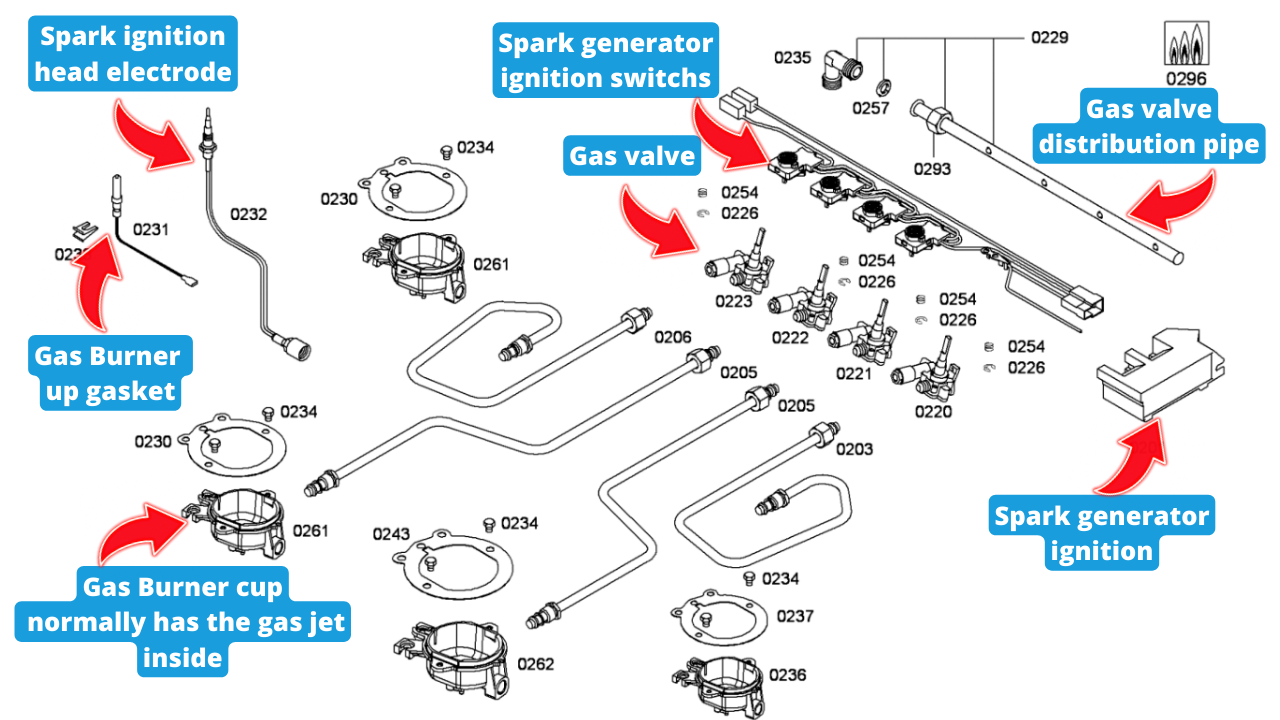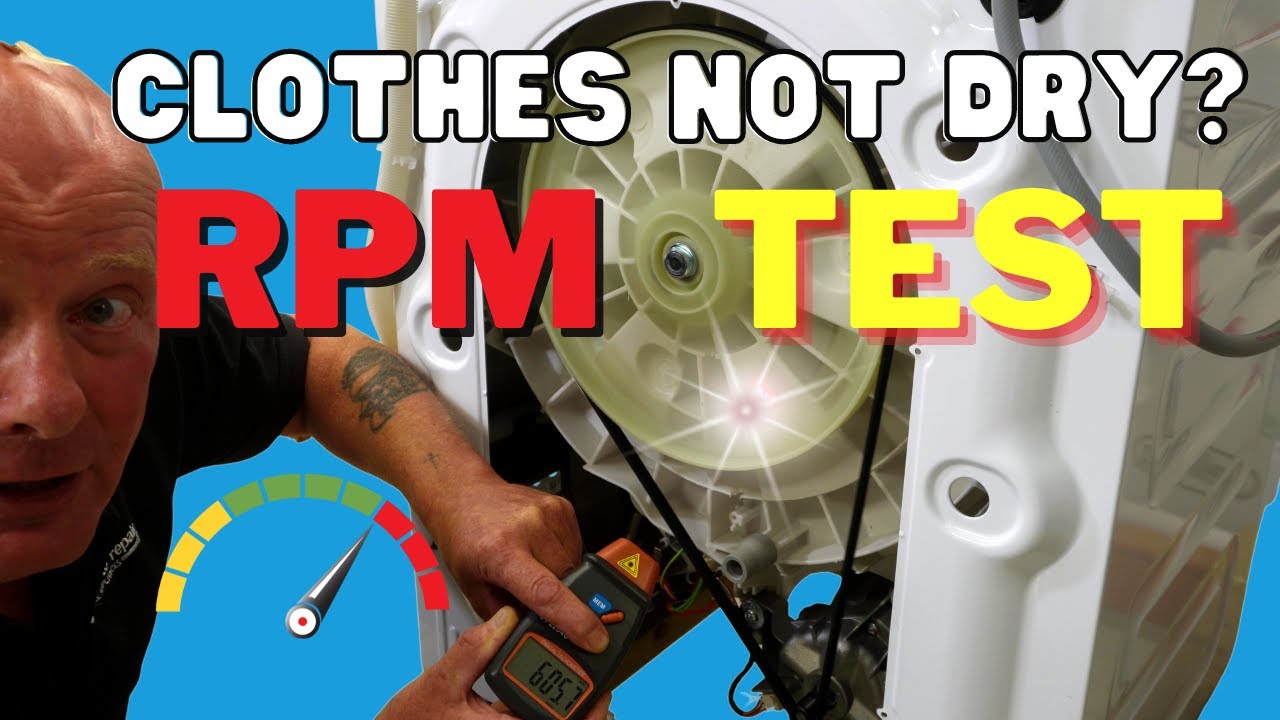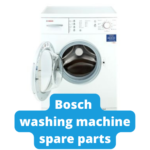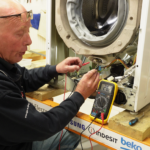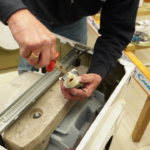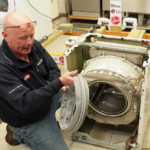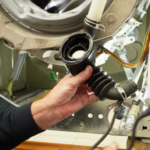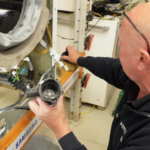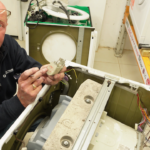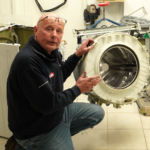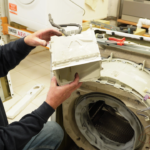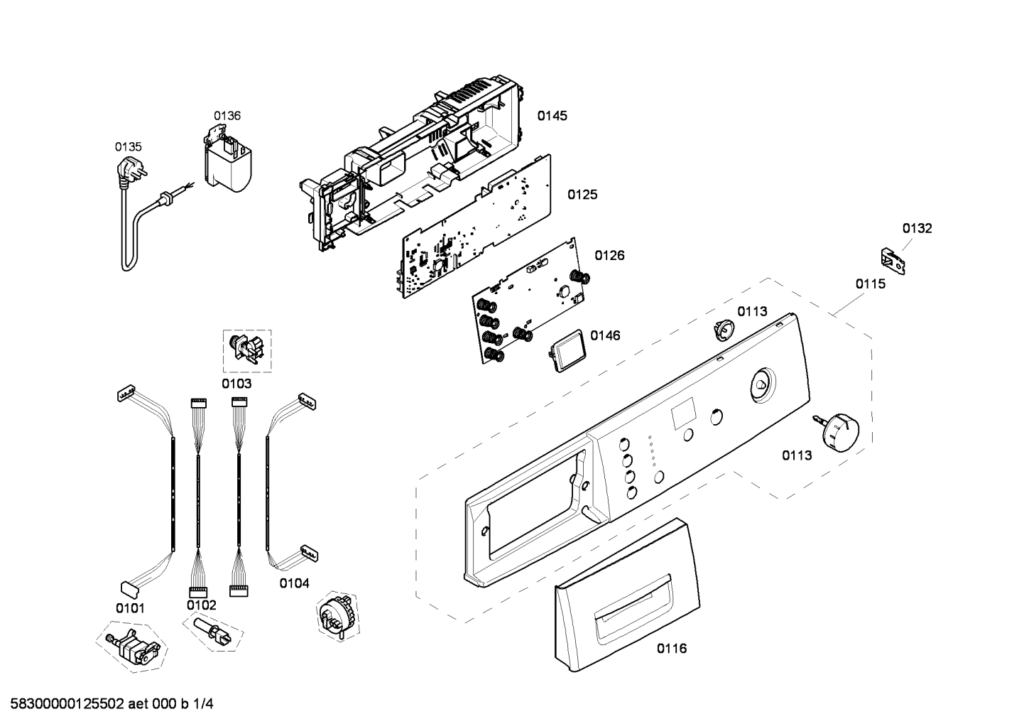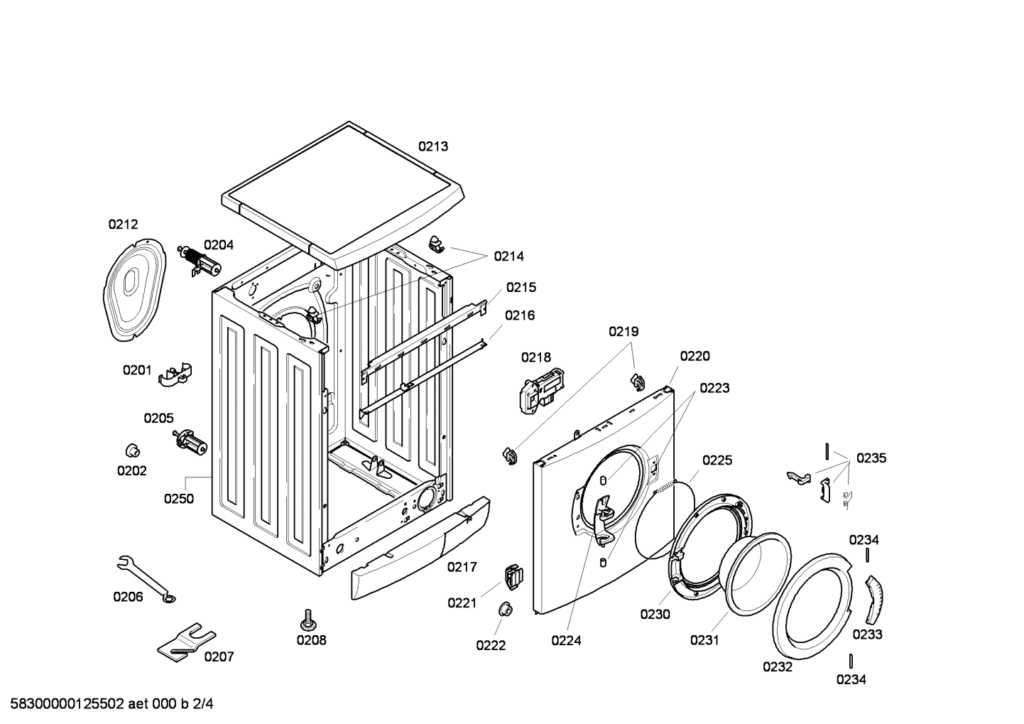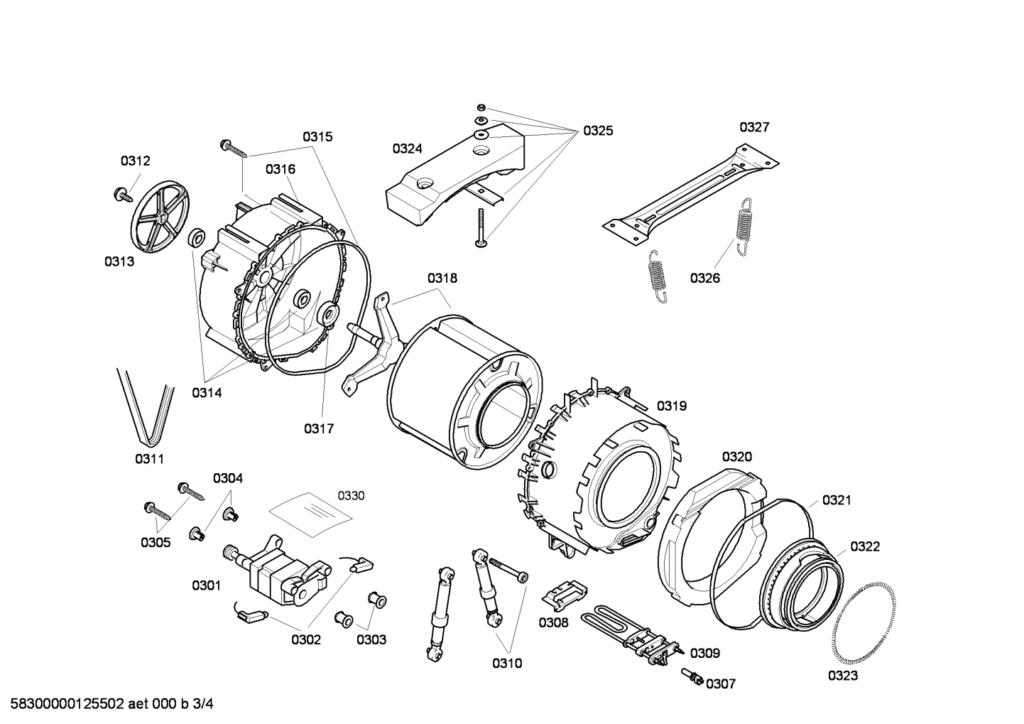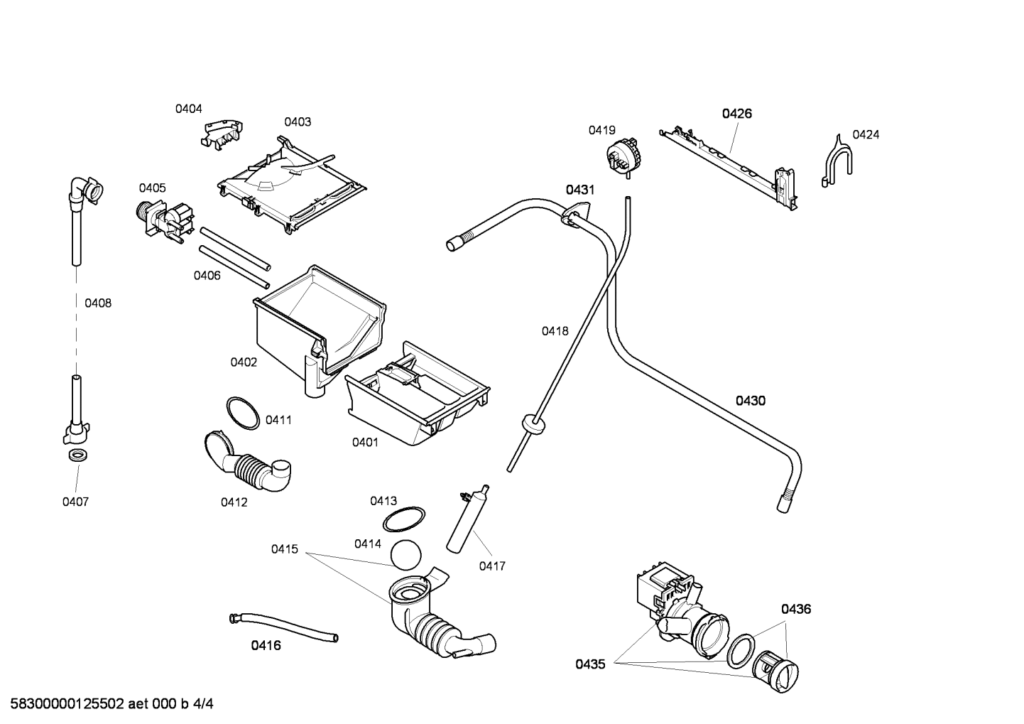Dismantling Bosch Classixx washing machine fault finding, and how components work
Bosch Classixx washing machine disassembly fault finding and how to access components
How to Dismantle a Bosch classixx washing machine WAE24364: A Step-by-Step Guide, Dismantling and Troubleshooting
Bosch Classixx Washing Machine Repair Guide
Introduction:
Welcome to our comprehensive guide on repairing Bosch Classixx washing machines. In this detailed resource, we will walk you through the process of dismantling a Bosch Classic washing machine and addressing common issues that may arise during its lifespan. Whether you're a seasoned DIY enthusiast or a novice, our step-by-step instructions will help you troubleshoot and repair your appliance effectively.
Overview:
The Bosch Classic washing machine, available in 6, 7, and 8-kilo variants, was known for its robust build and design. However, even the best appliances can encounter problems over time. In this guide, we will address one of the most frequent issues with these machines: a cracked aluminum spider in the drum assembly. This flaw can lead to a disturbing noise during high-speed spins, as you can see in the video above.
Tools Needed:
Before embarking on this repair journey, ensure you have the following tools at your disposal:
- Screwdriver Set: For removing screws and dismantling components.
- Pliers: For handling hose clips and wires.
- Torx 10, 15, 20 Screwdriver: Essential for loosening specific screws.
- Spanner: To manage nuts and bolts.
- Hammer: For tapping and releasing pressure in some parts.
- Multimeter: To test elements like the heating element and NTC sensor.
- Insulation Tester (Megger): To check electrical resistance in the heating element. Only if you have a friend who owns one, as they can be expensive.
- Pin Pliers: Useful for delicate tasks like handling springs.
- Grips: For secure removal of clips.
- Travel Hoist (if available): To safely lift and move the drum. (A friend will do.)
- Cable Ties: For organizing wiring.
- Small Hook or Screwdriver: To release various clips and connectors.
Video Breakdown:
This guide covers a broad spectrum of tasks:
- Introduction: An overview of the Bosch Classixx washing machine and the common issue we'll be addressing.
- Dismantling: A step-by-step dismantling process, including removing the back panel, lid, belt, motor, and various components.
- Electrical Components: Explanation of the motor's wiring, testing the heating element, and discussion of the emptying and filling system, plus other components like the electrical filter/suppressor, suspension legs, printed circuit board, pressure sensor, and water valves.
- Water System: Analyzing water valve issues, pressure switches, and potential water backflow problems.
- Hose and Wiring Removal: Demonstrating how to remove hoses and wiring for reuse.
- Drum Splitting: Showing how to split the drum to access the spider and other components.
- Spider and Drum Inspection: Highlighting the damage to the spider and the importance of inspecting the drum.
Conclusion:
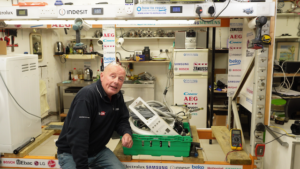 Repairing your Bosch Classixx washing machine not only saves you money but also contributes to a greener planet by reducing waste. We encourage you to follow our step-by-step instructions and utilize the listed tools to address common problems with your appliance effectively. Remember, extending the lifespan of your appliances is a win-win situation—saving resources and your hard-earned cash.
Repairing your Bosch Classixx washing machine not only saves you money but also contributes to a greener planet by reducing waste. We encourage you to follow our step-by-step instructions and utilize the listed tools to address common problems with your appliance effectively. Remember, extending the lifespan of your appliances is a win-win situation—saving resources and your hard-earned cash.
Once you have understood which part is needed for your appliance, you can choose whether you wish to purchase a new or used part. On occasions when we do not have the parts that you require, here is a good technique to help you find the correct component for your machine.
Additionally, here are some useful tips if you are looking for a more expensive part like the printed circuit board or the motor or even the whole drum. It is worth searching shopping channels (eBay, Facebook marketplace, Gumtree, etc.) with your full model number to see if there are any other secondhand machines with a different type of problem. In other words, you can use one machine to repair another machine. It is also worth using the genuine part number to see if you can find ex-stock items from engineers or even unwanted parts on these shopping channels.
For additional resources, check out our other repair videos and exploded diagrams, all aimed at empowering you to take control of your appliance maintenance. Thank you for choosing sustainability and practicality by opting for DIY repair.
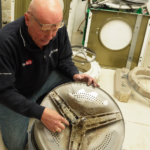 In this video, we explore a Bosch classic washing machine and address the issue of its aluminum spider developing a hairline fracture. This problem makes it uneconomical to repair the appliance. We will take this opportunity to disassemble the machine and demonstrate common problems that can occur in such machines.
In this video, we explore a Bosch classic washing machine and address the issue of its aluminum spider developing a hairline fracture. This problem makes it uneconomical to repair the appliance. We will take this opportunity to disassemble the machine and demonstrate common problems that can occur in such machines.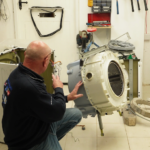
We will begin by explaining how the drainage system functions in the washing machine. It starts with water leaving the drum and flowing through the sump hose, then entering the pump. The pump pressurizes the water, forcing it through the waste hose and out of the machine into your drainage system.
Additionally, we will illustrate how the water inlet system operates. Water enters the machine from your tap through the water valve, then travels into the soap box and through the soap drawer hose into the drum. Inside the drum, the water is measured by the pressure switch, which informs the program when to activate or deactivate the water valve based on the required water level in the machine.
We will also examine the heating circuit and common issues that can prevent the machine from reaching its desired temperature during the wash cycle, or it may not heat at all. There are multiple faults that can lead to these problems, ranging from faulty heating elements to NTC sensors, or even an electrical relay on the main circuit board. Understanding what is happening is crucial for diagnosing which component is faulty. This knowledge can also help when dealing with issues like tripping the electrical circuit in your house, which can sometimes be as simple as a faulty heating element.
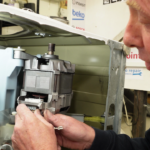 We will also show you how to remove the washing machine motor inspect the carbon brushes and understand the wiring going to the motor. There are also thermal cut out in motor windings which sometimes can become faulty, but you can see all that in another detailed video on how to test Bosch motors.
We will also show you how to remove the washing machine motor inspect the carbon brushes and understand the wiring going to the motor. There are also thermal cut out in motor windings which sometimes can become faulty, but you can see all that in another detailed video on how to test Bosch motors.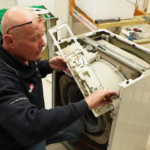
Understanding how the drum is attached to this Bosch washing machine is a vital step in learning how to remove it effectively. The video will guide you through the process of removing each component necessary to lift the drum out of the machine. This will allow you to determine whether you only need a new set of bearings, a new spider along with bearings, or in some extreme cases, a complete drum replacement.
-
Bosch washing machine will not spin
-
F18 F03 Bosch Washing machine not draining or emptying. Neff, Siemens, Balay, Constructa
-
Testing a Bosch Neff Siemens washing machine motor
-
How to replace washing machine drum bearings on Bosch, Neff, Siemens or Balay.
-
Washing machine Doorlock error codes E01, F08, F16, F34, E61 Bosch, Neff, Siemens
-
Bosch, Neff, Siemens washing machine clearing error code F04, F05, f21, F42, F43, F44
-
How to replace washing machine carbon brushes Bosch Balay Neff Siemens
-
How to replace a washing machine door lock on a Bosch Neff and Siemens.
-
How to change and replace a washing machine pump on Bosch, Neff and Siemens.
-
How to replace a washing machine door seal or gasket on a Balay, Bosch, Neff or Siemens.
Understanding Bosch washing machines components and functionality
The Bosch washing machine's door lock needs to be locked to start its cycle and keeps kids from opening it during use. If you can choose a program but nothing happens when pressing start, your door lock might be broken. You may even hear the faulty lock clicking.
Washing Machine Fill System Explained
The washing machine's fill system starts with water inlet valves that lead to the soap drawer. The water then flows through the fill-to-drum hose into the machine. A pressure switch at the front measures the amount of water. This switch connects to a large bowl and a small pipe. As it fills, air is pressurized and sent up to the pressure switch or one on a circuit board, telling the machine its current water level.
Bosch Washing machine, heating system
The heating system usually includes one or two temperature sensors, which can be mechanical thermostats or modern NTC sensors. These NTC sensors send resistance readings to the circuit board, and this changes with temperature. A relay on the board activates the heater until it hits the desired temperature.
If there's a faulty heater, sensor, relay on the board, or wiring issue, then your heating won't work. Also, if the element in your heater is damaged - either being open-circuit or having too high resistance - it could trip your house's electricity supply.
Bosch Washing Machine Drainage Process
The Bosch washing machine's drain system works during the rinse cycle or final spin. The drum spins, flinging water out of the clothes and down to the bottom of the machine. This water goes through a sump hose that may contain a ball, which prevents your soap powder from going into the pump system when filling. It then moves to the pump where it gets pressurized for removal from the machine.
Understanding Bosch Washing Machine Motor action
The Bosch washing machine motor, usually located at the bottom, has a tachometer attached to the motor's back, which informs the circuit board about its speed. During wash cycles, it rotates in either direction as directed by a relay or triac. On some washing machines, there is more than one circuit board.
As the washer continues running, it enters a rinse cycle where spin speeds change based on its stage in the cycle. The speed then boosts to match what's set on the program for that portion of cleaning.
During the final spin, water gets drained from high-speed rotations. As clothes dry out more, this rotation speed maxes out according to program settings - typically ranging between 800 and 1600 rpm.
Bosch washing machine suspension system
Bosch washing machines have a suspension system, much like cars, with two or three legs to stabilize the drum during wash cycles. If these legs wear out or get damaged, the machine may shake and make loud noises as the drum hits the cabinet during washing, rinsing, or spinning. It's important to replace worn-out legs to prevent this issue. Overloading the machine or not balancing clothes in the drum can also cause it to vibrate and produce unpleasant sounds. It also has springs at the top of the drum supporting the weight of the chassis.
Bosch washing machine drums
The drum of a Bosch washing machine is usually made from stainless or coated steel to prevent rust. It's attached to a three-legged spider at the back, which connects to the drum shaft and runs through seals and bearings. The drum shaft connects to the back pulley wheel (which is connected via a belt to the motor, allowing rotation).
The outer part is watertight with hose access for filling or emptying.
To avoid shaking, concrete blocks or plastic-encased weights are bolted onto the sides as counterweights.
On washer-dryers, a condensing unit at the rear lets water trickle down while in dry mode, converting water vapor into liquid.
Every few years, it's wise to check if these parts are still in good shape: bearings should be inspected for wear and tear; seals checked for leaks that could seep from. This ensures your washing machine performs optimally without any hitches.
Understanding Bosch Washing Machine Electronics
The Bosch washing machine's electrical system connects to the power source through a plug. A suppressor or filter regulates the electricity flow and prevents interference with other household items. The washing machine uses circuit boards: one for programming specific to that model, and another for its display.
These circuit boards contain elements like relays, triax, resistors, diodes, capacitors, etc., enabling them to control electricity supply to different parts of the machine at various times. They receive input from components such as motors tachometers and sensors like NTC, or mechanical thermostats when the program understands the information, it will increase spin speeds, change water levels, and water temperatures according to the sensor information.
A water pressure switch measures the amount of water in the machine at any given time. The programs are typically embedded into an EPROM system unique to each model. This board can be programmed only by engineers although pre-programmed ones may sometimes be available depending on the manufacturer.
Bad wiring or faulty devices can cause a short circuit damaging these boards beyond repair.
Bosch WAE24364gb/19 washing machine diagram of all components
To locate parts for your washing machine, begin by using the full model number to identify the specific component needed. This will provide you with a genuine part number. If we do not have it in stock, utilise this information to search other platforms such as Amazon and eBay.
For high-value items like motors and drums, consider adding the search to your favourites; patience may yield results over several weeks as these components emerge on shopping networks. It is also prudent to investigate compatible models for your appliance.
Bear in mind that an equivalent machine might be found on eBay – one could potentially "rob Charlie to make Peter better," so to speak.
Below are the diagrams from this Bosch WAE24364gb/19 washing machine use the number on the picture to go to the list at the bottom of the page to identify the correct part for your washing machine.
| Reference | Part Number | Description |
|---|---|---|
| 0101 | 00602987 | Cable harness |
| 0102 | 00602808 | Cable harness |
| 0103 | 00602810 | Cable harness |
| 0104 | 00602811 | Cable harness |
| 0113 | 00602804 | Knob-programme |
| 0115 | 00674474 | Panel-facia |
| 0116 | 00642460 | Tray handle-dispenser |
| 0126 | 00668003 | Control module |
| 0132 | 00182429 | Nut |
| 0135 | 00644995 | Power cord |
| 0136 | 00623842 | Capacitor-interference suppre. |
| 0145 | 00447520 | Housing |
| 0146 | 00643958 | Display |
| 0199 | 00633114 | Water filter |
| Reference | Part Number | Description |
|---|---|---|
| 0201 | 00095209 | Holder |
| 0202 | 00614457 | Cover |
| 0204 | 00611383 | Transit bolt |
| 0205 | 00611383 | Transit bolt |
| 0207 | 00493529 | Fixing Kit |
| 0208 | 00610643 | Foot |
| 0212 | 00362761 | Case-rear part |
| 0213 | 00770305 | Worktop |
| 0214 | 00167581 | Holder |
| 0215 | 00358923 | Rail |
| 0216 | 00435791 | Rail |
| 0217 | 00796389 | Panel-base |
| 0218 | 00610147 | Electric lock |
| 0219 | 00067083 | Holder |
| 0220 | 00235567 | Front panel |
| 0221 | 00187094 | Distance holder |
| 0222 | 00606923 | Holder |
| 0223 | 00171264 | Bushing |
| 0224 | 00171269 | Hinge-window |
| 0225 | 00439671 | fastening ring |
| 0230 | 00432073 | Ring |
| 0231 | 11020392 | Window |
| 0232 | 00366232 | Frame-window |
| 0233 | 00266751 | Handle |
| 0234 | 00171255 | Axis |
| 0235 | 00634207 | Latch |
| 0251 | 00420263 | Screw |
| Reference | Part Number | Description |
|---|---|---|
| 0301 | 00144797 | Motor |
| 0302 | 00154740 | Carbon-brush |
| 0303 | 00168798 | Holder |
| 0305 | 00171271 | Screw |
| 0307 | 00170961 | Sensor-NTC |
| 0309 | 12045481 | Heating element |
| 0310 | 11047540 | Shock absorber |
| 0311 | 00439490 | Belt-drive |
| 0312 | 00171270 | Screw |
| 0313 | 11002942 | Pulley |
| 0314 | 00172686 | Bearing set |
| 0315 | 00265964 | Sealing |
| 0316 | 00236013 | Tub |
| 0317 | 00613082 | Shaft seal |
| 0318 | 00773699 | Drum |
| 0319 | 00715100 | Tub |
| 0320 | 00773470 | Weight |
| 0321 | 00265965 | Band |
| 0322 | 00354135 | Boot gasket |
| 0323 | 00354134 | fastening ring |
| 0324 | 00214720 | Weight |
| 0326 | 00606818 | Spring-tank |
| 0327 | 00289822 | Support |
| Reference | Part Number | Description |
|---|---|---|
| 0401 | 00703270 | Dispenser tray |
| 0402 | 11035255 | Dispenser case |
| 0403 | 11035255 | Dispenser case |
| 0404 | 00171267 | Holder |
| 0405 | 00428210 | Valve-magnet |
| 0406 | 00171262 | Hose-valve/soap box |
| 0407 | 00027780 | Filter-water inlet |
| 0408 | 00700836 | Hose-inlet |
| 0408 | 00353925 | Hose-inlet |
| 0411 | 00421488 | fastening ring |
| 0412 | 00265958 | Hose-fill |
| 0413 | 00603523 | fastening ring |
| 0414 | 00171263 | Ball-sump |
| 0415 | 00480442 | Eco-hose-sump |
| 0416 | 00173229 | Drain hose |
| 0417 | 00424981 | Pressure chamber |
| 0418 | 00491919 | Hose-pressure chamber |
| 0419 | 00428683 | Regulator-water level |
| 0424 | 00655300 | Holder |
| 0430 | 00354124 | Outlet hose |
| 0431 | 00150871 | Terminal |
| 0435 | 00145787 | Pump-drain |
| 0436 | 00647920 | Fluff Filter for Dryers |


